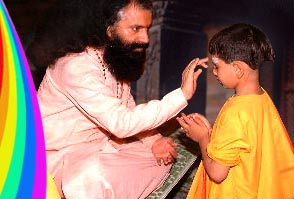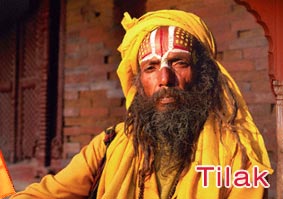As per the traditions of Hindus, there are varied
kinds of Tilak, each having its distinctive importance. Regarded as the
sign of good luck and prosperity, Tilak is applied on the forehead. The
forehead mark Tilak can be made by using sandal paste, turmeric, holy
ashes (Vibhuti) or kumkum. The worshippers of Lord Shiva called Saivites
apply tilaka made from the sacred ashes, since it symbolizes purity,
consecration and sanctification. They mostly draw three horizontal lines
known as tripundra.
The devotees of Lord Vishnu on the other hand wear tilak made from
sandalwood paste (Chandan). They usually draw it in the form of three
vertical lines. The worshippers of Shakti or Devi apply kumkum. Shaktas
usually draw a single vertical line. However, at times, their tilak is
in the form of a single dot. Apart from these, there are other types of
tilak such as the honorary tilakas consisting of Raj Tilak and Vir
Tilak. They are mostly drawn as a single vertical line in red color.
Raj tilak is applied when some eminent personalities are called upon to
grace a particular function or event. It was used in the bygone times
while throning kings. Vir Tilak is applied to those who come out
victoriously after winning in the battle field. Tilak is more often
applied using the index finger. In some customs, it is put on the
forehead with the thumb. After applying tilak, it is usually topped with
a few grains of rice.
Since times immemorial, women have been applying tilak on their
forehead, which is more popularly known as bindi. Women wear it for the
sake of adorning themselves. Thus, it is more of a beauty mark for women
in India. The traditional bindi was drawn as a single dot. However,
today, there is an amazing variety of bindis available in the market,
coming up in distinctive shapes and sizes. Married women wear another
tilak between the parting of the hair just above the forehead, which is
referred to as sindoor. It is an indication of the marital status.







